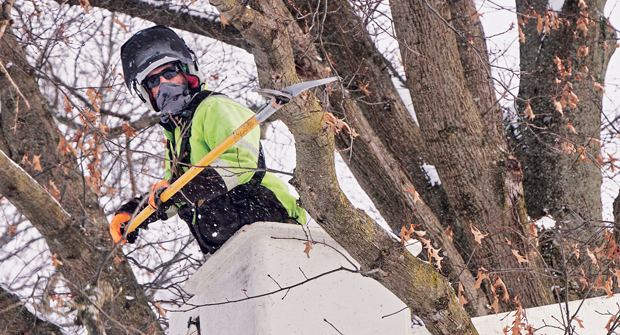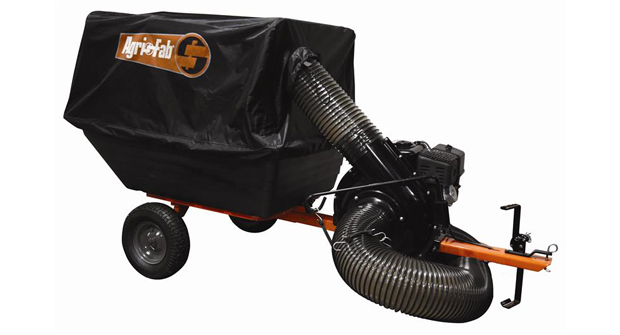As fall gives way to winter and landscape crews make their final visits to the properties under their care, tree experts encourage them to spend as much time looking up at the trees on those properties as they are looking down at the turf and landscaping beds.
That’s because this time of year is perfect for assessing the current health and safety of those trees and taking steps that can help prevent problems once spring rolls around again.
“This time of year, it can be a little more difficult for a layperson to discern hazards because many trees are dropping leaves, so dead spots are harder to make out,” says Lou Meyer, a certified arborist for Davey Tree who works in the Mid-Atlantic region. “But most landscapers are experienced enough to assess trees, identify potential trouble spots and know what work they can do and what work needs to go to a professional arborist. Doing that now can save lots of headaches down the road.”
Easy does it
Meyer suggests landscape contractors and lawn care operators start simple when assessing trees for any possible warning signs. “Anything that looks like it could fall from the sky and potentially hurt someone on the ground should be the first thing you note,” he says.
Not all of those are obvious from the ground; buds or flowers making an appearance at the wrong time of year or fungi and algae that might be the first sign of tree decay are often hard to spot without a close inspection, Meyer says. That doesn’t mean he’s encouraging crews to begin tree-climbing expeditions or bring in extra equipment that would allow them to get a better look.
“I carry a pair of binoculars most of the time, but they’re especially useful at this time of year,” he says. “It’s going to allow you a better look at things and help landscapers make more informed decisions about what additional steps might be needed.”
Meyer also says that not all hazards are created equal and that location is a critical factor in how landscapers should approach them.
“A target has to be present for it to be a true hazard,” Meyer says. “If you find a tree with dead spots or disease in the back 40 where no one ever goes, it’s much less of a concern than if a dead limb is over a driveway or a patio. Those high-frequency, high-traffic target areas are where you should really be focused.”
Meyer also says that now is the time to study trees that sit close to houses, office buildings or garages to ensure they have the proper clearance to handle any snow or ice loads they might encounter during winter.
“Branches that are only 3-5 feet above a building are going to be on top of that building with any significant snow or ice,” he says. “You want to get at least 5-8 feet of clearance in those situations before winter sets in.”
Preventative medicine
Not all steps landscape contractors can take require trimming or, in extreme cases, contracting with a professional tree service to manage the issue. Meyer says that focusing on the overall health of the tree can pay dividends now and when the snow clears in spring.
“Fall is a great time to set trees up for next season,” he says. “We recommend a deep fertilization for shrubs and trees at this time of year. To do that, we use a probe that goes into the ground 8-10 inches and is connected to a tanker truck full of tree food. When you squeeze the trigger, you’re delivering that food directly to the roots of the plant.”
Mulching is another beneficial step, Meyer says, because it can improve moisture retention and gradually provide trees with important nutrients as the mulch breaks down throughout the winter.
And even though it might seem counterintuitive to some, Meyer says watering is as important late in the season as it is during the spring and summer.
“People think that spring and summer are over, so they don’t need to water anymore,” he says. “But that’s not the case. Trees are still growing. They stop the shoot growth and stop growing above ground, but they start putting in their root growth and storing sugars in their roots. It’s really important to keep the roots damp throughout the year, at least until the first frost.”


